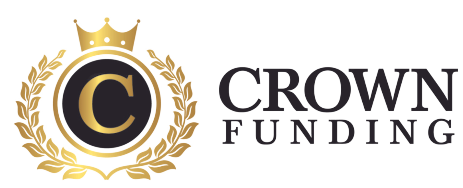
What is an Insured Mortgage and How Can it Benefit You?
If you’re a first-time or next-time homebuyer with a down payment of less than 20% (also known as equity), you’ll likely need mortgage default insurance. While this insurance incurs a premium, it also offers significant benefits for you. Let’s break down what an insured mortgage is, how it works, and the advantages it can bring.
Understanding Insured Mortgages
When you put down less than 20% on a home purchase, your mortgage requires default insurance, commonly referred to as a “CMHC” or “high-ratio” mortgage. This insurance helps protect the lender in case of borrower default, as it covers the larger loan amount relative to the home’s value.
While this premium is an additional cost, it benefits you as a buyer in several ways, including allowing you to enter the housing market sooner and possibly securing a lower mortgage rate.
How Insured Mortgages Work
An insured mortgage is necessary if your down payment is less than 20% of the home price, leading to a loan-to-value (LTV) ratio above 80%. This insurance protects the lender, and is typically provided by the Canada Mortgage and Housing Corporation (CMHC) or other private insurers.
You’ll pay an insurance premium that is usually added to your mortgage balance, and it’s calculated based on your down payment, the home purchase price, and your mortgage amount. In some provinces, this premium may be subject to Provincial Sales Tax (PST), which would be a separate closing cost.
Benefits of an Insured Mortgage
- Buy with Less Down Payment: You can purchase a home with a down payment as low as 5%, making it easier to buy your first or next home without needing years of savings.
- Access to Lower Rates: Because the lender is protected by insurance, they can offer you lower mortgage rates and flexible terms.
- Longer Amortization Options: First-time homebuyers and new-build buyers may be eligible for 30-year amortizations, lowering monthly payments and improving qualifying criteria.
- Potential for Insured Refinances: Starting January 15, 2025, insured refinancing options will allow homeowners to borrow up to 95% of their home’s equity for secondary suite construction (best done at renewal).
- Continued Perks at Renewal: If you keep your mortgage terms intact during renewal, you may continue to benefit from the advantages of your insured mortgage.
Mortgage Insurance and Your Down Payment Requirements
Here’s a breakdown of down payment requirements for insured mortgages:
- $500K or less – 5% down payment (insurance required)
- $500K to $1.5M – 10% down payment for the amount over $500K (insurance required)
- Over $1.5M – 20% down payment (no insurance required)
The insurance premium is based on your mortgage amount after applying your down payment.
Premium Examples for Insured Mortgages
The following are some examples of premiums for insured mortgages (as of Dec 15, 2024). These premiums are typically rolled into the mortgage balance and included in your regular payments.
- $100K home price: 5% down payment = $5K premium. Mortgage amount = $95K. Premiums: $3,800 (25 years) / $3,990 (30 years).
- $300K home price: 5% down payment = $15K premium. Mortgage amount = $285K. Premiums: $11,400 (25 years) / $11,970 (30 years).
- $600K home price: 5.83% down payment = $35K premium. Mortgage amount = $565K. Premiums: $22,584 (25 years) / $23,730 (30 years).
Who Offers Mortgage Default Insurance?
In Canada, mortgage default insurance is offered by three primary insurers:
- CMHC (Canadian Mortgage and Housing Corporation) – The most well-known option, often referred to as a “CMHC mortgage.”
- Sagen (formerly Genworth)
- Canada Guaranty
Your lender will typically arrange insurance through one of these providers.
How Do You Pay for Mortgage Insurance?
Mortgage insurance premiums are typically added directly to your mortgage balance and paid over the life of the loan. This is called Transactional Insurance and applies to high-ratio mortgages (with LTV above 80%).
In some cases, lenders use Portfolio Insurance or Bulk Insurance for loans with an LTV of less than 80%. This type of insurance is usually paid by the lender and may not be visible to the borrower.
Closing Costs and Mortgage Insurance
Although the premium is rolled into your mortgage payments, it’s important to note that mortgage insurance premiums are not considered part of your mortgage closing costs. Closing costs (e.g., land transfer tax, adjustment costs) are separate from the insurance premium and need to be budgeted for separately.
Latest Updates on Insured Mortgages
- Secondary Suite Refinances: Starting January 2025, homeowners will be able to borrow up to 95% of their home equity to fund secondary suite construction through insured refinancing.
- New Rules: Be aware of upcoming rule changes for insured mortgages, which may affect premiums, eligibility, and refinancing opportunities.
Need Help Navigating Insured Mortgages?
At Crown Funding, we are your trusted Best Mortgage Broker in Surrey and Mortgage Advisor in Surrey. We stay updated on the latest mortgage trends and can help guide you through the process of securing the best mortgage for your unique situation. Contact us today for expert advice and personalized mortgage options.
